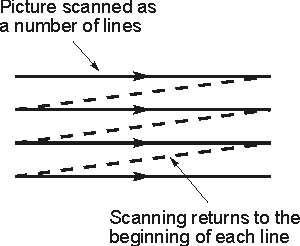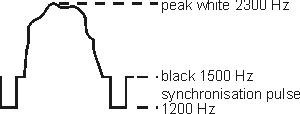SSTV - Slow Scan Television
An overview, summary or tutorial about the basics of Slow Scan Television, SSTV used mainly on the HF amateur radio bands.
Slow scan television, SSTV, is used for a number of applications on the HF bands and it is popular with a number of radio amateurs or radio hams who enjoy sending pictures or images over the HF bands. In this way radio hams are able to exchange pictures and images around the globe.
While it must be admitted that slow scan television is not as widely used as many other modes, it is nevertheless an important element of amateur radio, and with access to scanners and other forms of image creators, including cameras, it is an aspect of amateur radio that can be particularly interesting. Obviously the low resolution and picture rate can be a drawback, but these are necessitated by the lack of bandwidth available.
SSTV basics
Slow scan television, SSTV, shares many of the basic principles of the analogue broadcast television technology. However broadcast television transmissions occupy bandwidths of several megahertz. This cannot be accommodated on the HF bands and therefore to reduce the bandwidth the picture transmission rate is considerably slowed down. In addition to this less lines are broadcast and the general quality is reduced to a degree that the signal can be accommodated within the 3 kHz bandwidth occupied by a single sideband transmission.
To create an SSTV signal a picture is scanned in basically the same way as a normal television signal. A point moved across the picture and the light level detected. Once the spot has completely moved across the picture it quickly moves back to the original side of the picture but down slightly and starts again. In this way the whole of the picture is scanned. At the receiving end the light levels detected at the transmitter are used to build up the original picture. The scanning directions are left to right for the line scan and top to bottom for the frame. Generally there are 120 or 128 lines per frame and the aspect ratio, i.e. the width to height ratio is 1:1.

Scanning used in slow scan television
In order to ensure that the receiver and transmitter are synchronised, pulses are placed between each line and each complete picture or frame. Line synchronisation pulses are 5 milliseconds long whereas those for synchronising the whole picture or frame are 30 milliseconds in length.
An example of a typical video signal is shown below, and this is used to modulate the carrier. To achieve this an audio tone is frequency modulated and this is transmitted as a single sideband signal. The audio signal a frequency of 1200 Hz for a frame pulse, 1500 Hz for black and up to 2300 Hz which gives peak white. In essence this gives a radio frequency signal which varies by +400 Hz for peak white, -400 Hz for black, and -700 Hz for a synchronisation pulse. As the synchronisation pulses are represented by a frequency lower than the one representing the black level, they are said to be blacker than black, and they cannot be seen on the screen.

A slow scan television, SSTV, signal
Picture quality can vary widely. To ensure that the optimum quality is achieved it is essential to have good detection of the synchronisation pulses. Often a special filter is used to detect these 1200 Hz pulses, even though the pulses can easily be seen in the demodulated video signal.
There is a wide variety of different standards for picture size. Typically pictures are 128 lines and take eight seconds to send. Another standard is 256 lines, although pictures can be almost any length, terminated by a frame synchronisation pulse.
Operating SSTV
There are several SSTV, slow scan television frequencies allocated on the HF bands. These channels are normally reserved for SSTV, although there is often some interference from nearby SSB stations.
| Band | IARU recommended frequency (MHz) |
| 80 metres | 3.735 |
| 40 metres | 7.040 |
| 20 metres | 14.230 |
| 15 metres | 21.340 |
| 10 metres | 28.680 |
It is common to start to establish an SSTV contact by first making contact on SSB. Once contact has been reliably set up, then it is possible to move to SSTV when both stations are ready.
When the SSTV contact has been set up it is normal to exchange photographs or images of subjects such as the shack, equipment, or location. It is even possible to send a photo of yourself. Text including details of the weather, or the equipment being used is not normally exchanged.
 Written by Ian Poole .
Written by Ian Poole .
Experienced electronics engineer and author.
More Ham Radio Topics:
What is ham radio
Callsigns
Morse code
Voice modes
Digital data modes
QRP operating
Operating awards
Codes & abbreviations
Ham bands overview
Operating via differnet propagation modes
Repeaters
Callsigns
Contact formats
Setting up a shack & buying equipment
Return to Ham radio menu . . .


